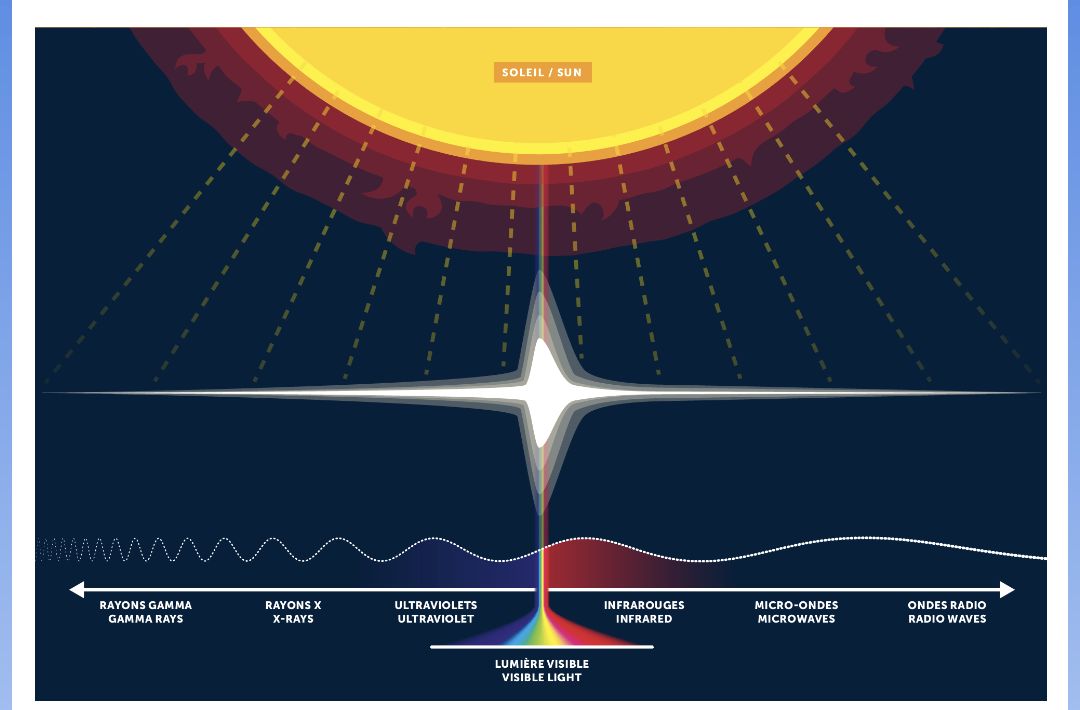**** Info via Environment Canada
Ultraviolet in the sun’s spectrum
Solar energy passes through the atmosphere in the form of electromagnetic radiation of different wavelengths that we see as light or feel as heat. These waves are partially reflected or absorbed by the atmosphere, but most of their energy is converted into heat by the land and oceans. Today, meteorologists can measure solar radiation and how it interacts with the atmosphere to “visualize” various weather phenomena, including clouds’ thickness and altitude.
Although most of the solar radiation that reaches the Earth is in the visible spectrum, we also receive significant amounts of infrared and ultraviolet (UV) radiation. About half of the energy sent out by the sun is in the form of light. About 40% happens in infrared and 10% in UV.
UV index: A bright idea!
The UV index is a Canadian innovation. It was created in 1992 by our scientists as a tool to help protect Canadians from overexposure to the sun. The scientists set the original UV Index scale from zero to 10, based on the UV values usually found in Canada.
In 1994 the World Health Organization (WHO) and the United Nations Environment Program recognize the value of the UV index and adopted it as an international program. A global standard, based on the Canadian model, was developed in 2002, and is now used around the world. As UV index values of up to 14 can be found in tropical countries, the WHO decided to increase the scale.
A high index number means that more cancer-causing ultraviolet rays are reaching us, and you would be wise to protect yourself. Put on a hat, sunglasses and sunscreen, summer or winter!
Learn more about UV index and sun safety.




